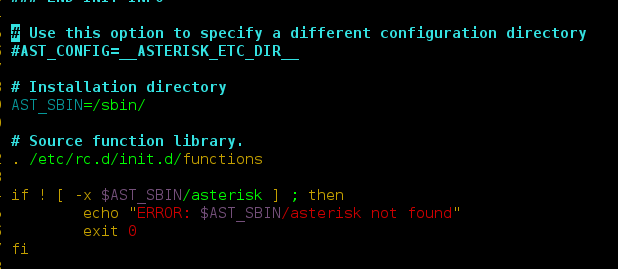Given two matrices, the task is to write a Python program to add elements to each row from initial matrix.
Input : test_list1 = [[4, 3, 5,], [1, 2, 3], [3, 7, 4]], test_list2 = [[1, 3], [9, 3, 5, 7], [8]] Output : [[4, 3, 5, 1, 3], [1, 2, 3, 9, 3, 5, 7], [3, 7, 4, 8]] Explanation : Matrix is row wise merged. Input : test_list1 = [[4, 3, 5,], [1, 2, 3], [3, 7, 4]], test_list2 = [[1], [9], [8]] Output : [[4, 3, 5, 1], [1, 2, 3, 9], [3, 7, 4, 8]] Explanation : Matrix is row wise merged.
Method #1: Using enumerate() + loop
In this, we get each index of each initial matrix and append its all elements to the second matrix’s corresponding row.
Python3
# Python3 code to demonstrate working of# Concatenate 2 Matrix Row-wise# Using loop + enumerate()# initializing liststest_list1 = [[4, 3, 5, ], [1, 2, 3], [3, 7, 4]]test_list2 = [[1, 3], [9, 3, 5, 7], [8]]# printing original listsprint("The original list 1 is : " + str(test_list1))print("The original list 2 is : " + str(test_list2))for idx, ele in enumerate(test_list1): new_vals = [] # getting all values at same index row for ele in test_list2[idx]: new_vals.append(ele) # extending the initial matrix test_list1[idx].extend(new_vals)# printing resultprint("The concatenated Matrix : " + str(test_list1)) |
Output:
The original list 1 is : [[4, 3, 5], [1, 2, 3], [3, 7, 4]]
The original list 2 is : [[1, 3], [9, 3, 5, 7], [8]]
The concatenated Matrix : [[4, 3, 5, 1, 3], [1, 2, 3, 9, 3, 5, 7], [3, 7, 4, 8]]
Time Complexity: O(n*n)
Auxiliary Space: O(n)
Method #2: Using zip() + list comprehension
In this, we perform the task of concatenating rows using zip(), and iteration through each row happens using list comprehension.
Python3
# Python3 code to demonstrate working of# Concatenate 2 Matrix Row-wise# Using zip() + list comprehension# initializing liststest_list1 = [[4, 3, 5, ], [1, 2, 3], [3, 7, 4]]test_list2 = [[1, 3], [9, 3, 5, 7], [8]]# printing original listsprint("The original list 1 is : " + str(test_list1))print("The original list 2 is : " + str(test_list2))# zip() combines the results# list comprehension provides shorthandres = list(sub1 + sub2 for sub1, sub2 in zip(test_list1, test_list2))# printing resultprint("The concatenated Matrix : " + str(res)) |
Output:
The original list 1 is : [[4, 3, 5], [1, 2, 3], [3, 7, 4]]
The original list 2 is : [[1, 3], [9, 3, 5, 7], [8]]
The concatenated Matrix : [[4, 3, 5, 1, 3], [1, 2, 3, 9, 3, 5, 7], [3, 7, 4, 8]]
The time and space complexity of both the methods is same:
Time Complexity: O(n2)
Space Complexity: O(n)
Method #3: Using extend()+loop
Python3
# Python3 code to demonstrate working of# Concatenate 2 Matrix Row-wise# initializing liststest_list1 = [[4, 3, 5, ], [1, 2, 3], [3, 7, 4]]test_list2 = [[1, 3], [9, 3, 5, 7], [8]]# printing original listsprint("The original list 1 is : " + str(test_list1))print("The original list 2 is : " + str(test_list2))for i in range(0, len(test_list1)): test_list1[i].extend(test_list2[i])# printing resultprint("The concatenated Matrix : " + str(test_list1)) |
The original list 1 is : [[4, 3, 5], [1, 2, 3], [3, 7, 4]] The original list 2 is : [[1, 3], [9, 3, 5, 7], [8]] The concatenated Matrix : [[4, 3, 5, 1, 3], [1, 2, 3, 9, 3, 5, 7], [3, 7, 4, 8]]
Time complexity: O(n*n), where n is the length of the test_list. The extend()+loop takes O(n*n) time
Auxiliary Space: O(n), extra space of size n is required
Method #4: Using numpy
Note: Install numpy module using command “pip install numpy”
Python3
#Importing numpy libraryimport numpy as np#initializing liststest_list1 = [[4, 3, 5, ], [1, 2, 3], [3, 7, 4]]test_list2 = [[1, 3], [9, 3, 5, 7], [8]]#Printing original listsprint("The original list 1 is : " + str(test_list1))print("The original list 2 is : " + str(test_list2))#Using numpy to concatenate two lists row-wiseres = np.concatenate((test_list1, test_list2), axis = 1)#printing resultprint("The concatenated Matrix : " + str(res)) |
Output:
The original list 1 is : [[4, 3, 5], [1, 2, 3], [3, 7, 4]]
The original list 2 is : [[1, 3], [9, 3, 5, 7], [8]]
The concatenated Matrix : [[4, 3, 5, 1, 3], [1, 2, 3, 9, 3, 5, 7], [3, 7, 4, 8]]
Time Complexity: O(n^2)
Auxiliary Space: O(n)
Method #5: Using itertools.chain() and map()
This method uses the itertools.chain() function to chain the two input matrices, and the map() function to convert the chained iterable into a list of lists representing the concatenated matrix.
- Import the itertools module.
- Initialize the two matrices test_list1 and test_list2.
- Use the zip() function to pair up corresponding rows of the two matrices.
- For each pair of rows, use itertools.chain() to concatenate them row-wise.
- Convert each concatenated row back into a list.
- Collect all the concatenated rows into a new list, which represents the final concatenated matrix.
Python3
import itertools# initializing liststest_list1 = [[4, 3, 5, ], [1, 2, 3], [3, 7, 4]]test_list2 = [[1, 3], [9, 3, 5, 7], [8]]# using itertools.chain() and zip() to concatenate the two matrices row-wiseconcatenated_matrix = [list(itertools.chain(*x)) for x in zip(test_list1, test_list2)]# printing resultprint("The concatenated Matrix : " + str(concatenated_matrix)) |
The concatenated Matrix : [[4, 3, 5, 1, 3], [1, 2, 3, 9, 3, 5, 7], [3, 7, 4, 8]]
Time complexity of the code is O(NM), where N is the number of lists in test_list1 and test_list2, and M is the maximum length of the lists.
The auxiliary space of the code is O(NM), since a new list of length N*M is created to store the concatenated matrix.




